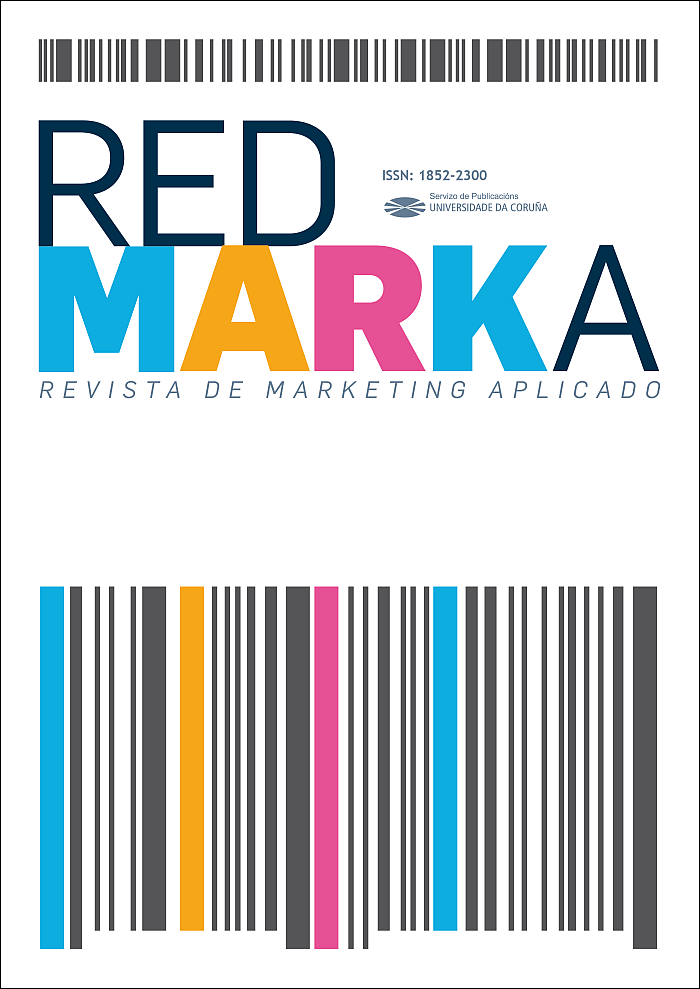Storytelling y retromarketing: potenciando la comunicación de las marcas
Contenido principal del artículo
Resumen
La técnica o arte del storytelling está cada vez más presente entre los profesionales de la comunicación y el marketing. Las marcas son hoy conscientes de la importancia de agregar valor a través de las historias diferenciadas, que pueden coadyuvar a la fidelización de sus clientes. El presente artículo tiene como objetivo crear conciencia sobre la relevancia dual del storytelling y el retromarketing, como herramientas poderosas a efectos de mejorar la efectividad de la estrategia de comunicación de marca. Para tal fin, se analizan las sustancias químicas generadas en el cerebro durante la narración de diferentes tipos de historias que influyen en el comportamiento del consumidor. Asimismo, se analizan arquetipos de marca basados en la perspectiva de Carl Jung y se revisan experimentos que podrían demostrar el valor económico del storytelling y las stories de retromarketing. Como resultado, el storytelling y el retromarketing elevan la singularidad de las marcas y pueden inducir relaciones más profundas y genuinas entre la compañía y el cliente. Esta etapa de conexión emocional se puede alcanzar cuando el storytelling se integra en la estrategia de marketing que se dirige a la audiencia adecuada.
Palabras clave:
Descargas
Detalles del artículo
Citas
Aaker, J. (2019). Harnessing the power of stories. Stanford University.
Associated Press. (2001). Levi Strauss buys back pair of 1880s jeans for $46,532. www.deseret.com/2001/5/25/19588025/levi-strauss-buys-back-pair-of-1880s-jeans-for-46-532
Bernardo, N. (2014). Transmedia 2.0: How to Create an Entertainment Brand Using a Transmedial Approach to Storytelling. BeActive Books.
Bombril Oficial. (2019). Bombril & Netflix - APP Stranger Antenna. www.youtube.com/watch?v=b7_aCq_gI4o
Brown, S., Kozinets, Robert, V., and Sherry, J. F. (2003). Sell Me the Old, Old Story: Retro marketing Management and the Art of Brand Revival. Journal of Customer Behaviour, 2, 133-147. https://doi.org/10.1362/147539203322383537
Colicev, A., Kumar, A., and O'Connor, P. (2019). Modelling the relationship between firm and user-generated content and the stages of the marketing funnel. International Journal of Research in Marketing, Elsevier, 36(1), 100-116. https://doi.org/10.1016/j.ijresmar.2018.09.005
CNBC. (2011). Business news. 10 Big Successes in Product Placement. www.cnbc.com/2011/06/03/10-Big-Successes-in-Product-Placement.html
Dove US (2013). Dove Real Beauty Sketches - You’re more beautiful than you think. www.youtube.com/watch?v=litXW91UauE
Envy Chain. (2016). Interview - Chapter 18 - Hugo Veiga / Diego Machado. www.youtube.com/watch?v=3HoYLQ-wJdc
Ganassali, S., and Matysiewicz, J. (2020). Echoing the golden legends: storytelling archetypes and their impact on brand perceived value. Journal of Marketing Management. https://doi.org/10.1080/0267257X.2020.1831577
Harvard Business School. (2003). The Subconscious Mind of the Consumer (And How To Reach It). https://hbswk.hbs.edu/item/the-subconscious-mind-of-the-consumer-and-how-to-reach-it
Houraghan, S. (2018). Brand Archetypes: The Definitive Guide [36 Examples]. Iconic Fox. https://iconicfox.com.au/brand-archetypes/
IKEA. (2013). Place IKEA furniture in your home with augmented reality. www.youtube.com/watch?v=vDNzTasuYEw&t=61s
Jenkins, H. (2006). Convergence culture where old and new media collide. New York University Press.
Jung, C. G. (1968). The archetypes and the collective unconscious. Collected Works of C. G. Jung, 2nd. Routledge.
Leigh, David J. (2011). Carl Jung’s Archetypal Psychology, Literature, and Ultimate Meaning. Journal of Ultimate Reality and Meaning. https://doi.org/10.3138/uram.34.1-2.95
Linkedin. (2019). The experiment proves the value of stories. www.linkedin.com/business/marketing/blog/linkedin-ads/the-experiment-that-proves-the-value-of-stories
Mark, M., and Pearson, C. S. (2001). The hero and the outlaw: Building extraordinary brands through the power of archetypes. McGraw-Hill.
Meio & Mensagem. (2019). Netflix cria app que funciona com Bombril. www.meioemensagem.com.br/home/comunicacao/2019/07/01/netflix-cria-app-que-funciona-com-bombril.html
Miller, D., (2017). Building a storied brand. Harper Collins Publishers.
Peterson, L. (2017). The Science Behind The Art Of Storytelling. Harvard Business Publishing. www.harvardbusiness.org/the-science-behind-the-art-of-storytelling
Phillips, D. J., (2019). The Art of Scientific Storytelling - Art of Charm Ep. #786. www.youtube.com/watch?v=8P5o-XQ4C-E
Rodriguez, G. (2017). This Is Your Brain On Storytelling: The Chemistry Of Modern Communication. Forbes. www.forbes.com/sites/giovannirodriguez/2017/07/21/this-is-your-brain-on-storytelling-the-chemistry-of-modern-communication/?sh=4c71b3ddc865
Sinek, S. (2018). First ask why. Penguin Books Ltd.
TEDx Talks. (2017). David JP Phillips: The magical science of storytelling. www.youtube.com/watch?v=Nj-hdQMa3uA
Walter, E. and Gioglio, J. (2018). The laws of brand storytelling. McGraw Hill Education.
Zaltman, G., Jaworski, B., Kohli, A. K., Tuli, K. R., and Ulaga, W. (2019). Mapping Customer thinking with theories-in-use, American Marketing Association. www.ama.org/2019/12/18/mapping-customer-thinking-with-theories-in-use/







